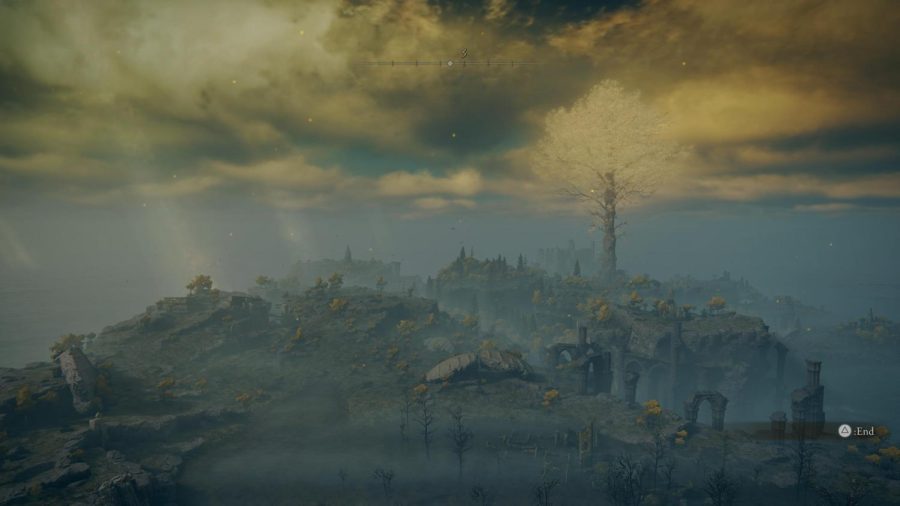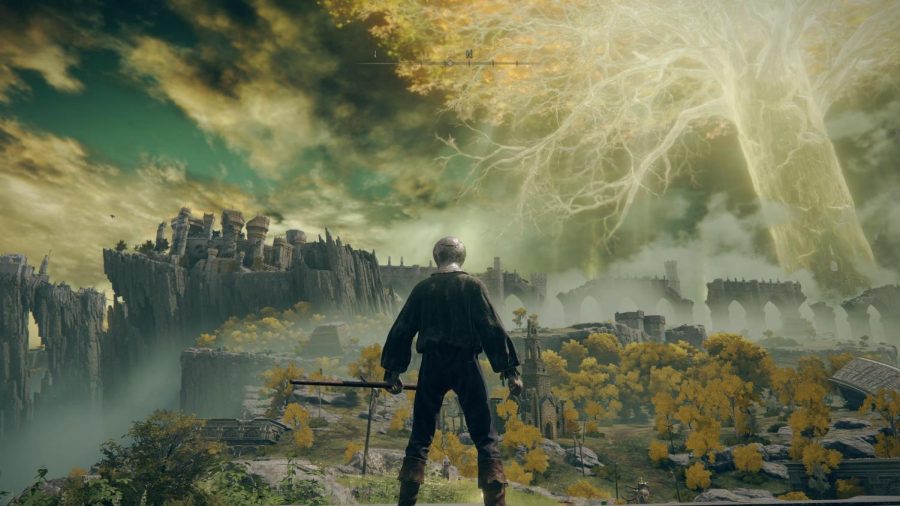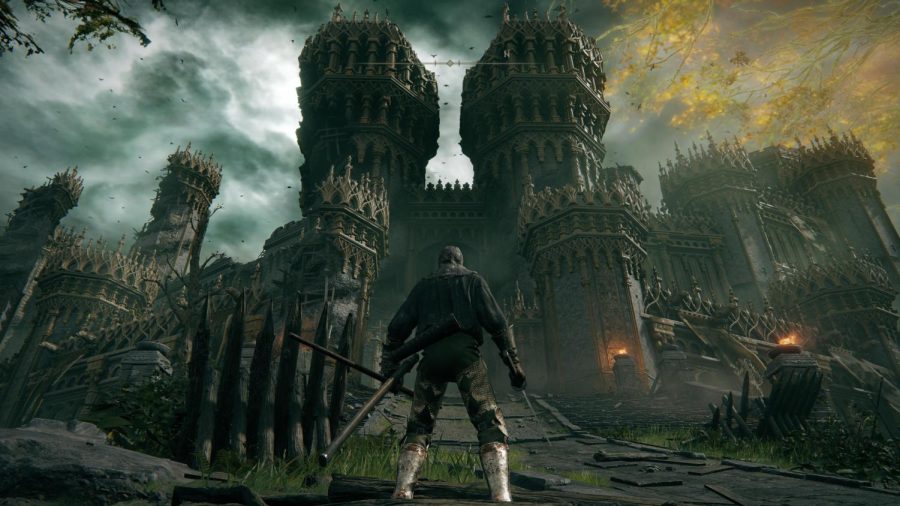REVIEW: The early hours of FromSoftware’s beautiful, deadly masterpiece, Elden Ring
If at first you don’t succeed, die, die again
The first view of the open world after emerging from the tutorial cave. What is seen on screen is only a fraction of the game’s beautiful and sizable playable area. Screenshot taken on Playstation 5
March 16, 2022
I find myself stepping carefully along a narrow foothold at the side of a chasm following a faint blue thread of light that hangs in the air which leads to the entrance of a crypt below. I hop down, hoping that the fall won’t hurt, or at least won’t outright kill me and roll as I hit the ground, getting back up on my feet just in time for a giant crab to charge forward from behind and crush me to death.
The next time around, following a trek back to the cliff from the nearest respawn point, I made sure to drop down behind the crab this time and managed to survive.
The most important thing to bear in mind while playing “Elden Ring” is that the game does not treat death as a punishment; dying is not failure, but part of the learning process. And in the twenty or so hours I’ve played so far, I have had many chances to learn.
The discourse that often surrounds FromSoftware, the studio behind “Elden Ring”, “Dark Souls” and “Bloodborne”, among others, is that they make games that are overwhelmingly difficult.
At times I have run from a respawn point to a hard encounter over and over again hoping to make progress through sheer stubbornness; the gameplay equivalent of slamming one’s head into a wall until it collapses.
Keeping my eyes open and learning the attack patterns of the enemies and layout of where I encounter them, I slowly gain the tools I need as a player to overcome the challenge.
Therein lies the trick of “Elden Ring”; leveling up your character is certainly vital for progression, but just as important is growing your own skills as a player. It is a game where improvement is more than the numbers on the screen getting bigger.
The game is littered with bosses that test the limit of the player’s skill; tenacity is a must, but learning their patterns and the range of their attacks is vital to overcoming them. The “brick wall v. head” approach can help, but it alone will not carry the day.
Eventually, encounters will feel easier not because the boss is weaker but because the player themselves has grown better at it.
The combat is intense; a mix of frenetic action and deliberate pacing and positioning depending on the enemies you encounter and the way you want to tackle the situation. I prefer a mix of spellcasting and light sword combat to have long and short range options covered.
The options for combat are more comprehensive than previous titles made by FromSoftware, adding more stealth opportunities in addition to a bevy of weapons from a shortsword to a hammer that is more than half the size of the player, among plenty of others.
The story, penned in part by George R. R. Martin of “Game of Thrones” fame/infamy, is largely told through implication; gleaned through item descriptions, dialogue and the environment itself.
And oh, what an environment; the moment I exited the tutorial cave and stepped out to gaze upon the wide region known as The Lands Between, I was struck by the beauty of this world dotted with ruins and dominated by grand, glowing trees that reached across the skies. The world is presented in a muted palette, evocative of a painting stained by smoke and time.
The sense of adventure and exploration in Elden Ring is comparable only to 2017’s “The Legend of Zelda: Breath of the Wild”, where the player is given a map with minimal markings on it past the ones you make yourself.
When weaving between trees to find a cave tucked between a tree trunk and a rocky outcropping heading into the face of a cliff, it feels as though you’ve stumbled upon a landmark forgotten by time, and that you may be the first person to have entered it in ages.
The world is marked by signs of life; messages, ghosts, bloodstains, and summon signs left behind by other players playing their own game, writing their own stories and overlapping the player’s for only a moment. Players can leave hints, messages of support, or, occasionally even lies saying that jumping off a cliff may lead to a secret path; all small reminders that the player may be alone in the game world, but they are not in the real one.
This review is an early impressions review, as the 20 or so hours I have put into the game have yet to even scratch the surface of this deep and expansive game, but I cannot wait to keep playing. I encountered little to no performance issues while playing on the Playstation 5, but I have heard from numerous sources that performance may be inconsistent on PC currently.
The Lands Between are often unforgiving and full of death, but they also hold the key to the almost meditative experience of roaming the wilds and reflecting on losses in pursuit of success. I look forward to the adventures I have ahead of me in “Elden Ring”.
There are significant challenges to overcome which may prove frustrating for players, but the world, gameplay and unparalleled sense of accomplishment to be found in “Elden Ring” make the game something I highly recommend trying out for yourself.


































































































































